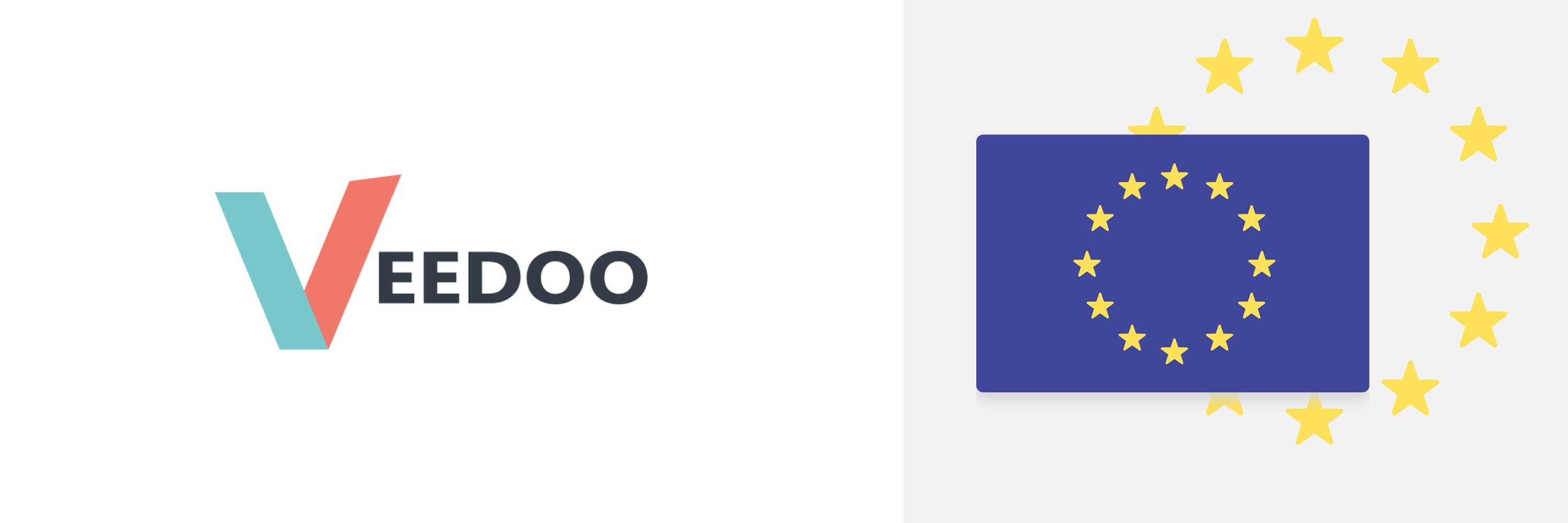
Establishing a robust online presence is not just beneficial; it's essential.
In the dynamic world of European Union (EU) projects, establishing a robust online presence is not just beneficial; it's essential. At Veedoo.io, we specialise in crafting websites that not only meet but exceed the unique demands of EU projects. This guide delves into the key considerations and best practices for developing a website that resonates with the ethos of your EU project.
Define Your Website's Purpose
Before approaching web developers, it's crucial to determine what your website should accomplish. Consider the sections and content you need, and identify your primary audience, which typically includes:
- European Commission Staff: They assess the project's progress. While direct content for EC staff may be rare, their needs and expectations should not be overlooked.
- Project Participants: Your site can facilitate collaboration by sharing documents, notes, and meeting invites. Consider a members' area for internal communication, but be mindful of the added complexity and management it entails. Utilising separate project collaboration software for internal coordination is often more efficient.
- 3. The Public: Focus on presenting clear, logical, and functional information about your project.
Essential Website Sections for EU Projects
- Homepage: Begin with a crisp description of the project, its objectives, and activities.
- Consortium Page: Include logos and links to all project partners. Ensure easy updating of this information throughout the project.
- Downloads/Deliverables: Highlight the tangible outcomes and progress of your project.
- Contact Page: Ensure easy contact methods, possibly via a web form to avoid publishing your email address.
- Additional Info: Information about EU funding is usually mandatory and can be included in the website footer for transparency.
- Social Media Accounts. If you have them, make sure you add them to the website
Finally, decide if you need the website to be available in more than one language. Sticking to one language will make the site much easier to manage, but if you need additional languages it's important to decide who will write or translate your content and to discuss this with your web developer.
Contact Veedoo to discuss your next EU project website!
Choosing a Web Developer
Once you have thought about the content and requirements, the next task is to find a web developer to develop the site for you. Most good devlopers or agencies will work with you to define the final website requirements, but here are some things you'll need to consider.
Your Content Management System
Choosing the right Content Management System (CMS) is paramount. While WordPress is popular for its user-friendliness, other CMS platforms like Joomla and Drupal might offer specific functionalities but often at the cost of increased complexity. A consistent CMS across multiple projects can streamline management. Be cautious of developers pushing proprietary in-house software; this could lead to future complications if support is withdrawn.
If you manage multiple sites, or need more flexibility over the site design and structure, consider a solution like Prismic or Sanity.
Hosting
When it comes to hosting, consider a full-service agency that can develop, host, and support your website, streamlining communication and troubleshooting. This will also help to avoid any 'blame games' between the developer and hosting company if something goes wrong.
Who is the webmaster?
While most CMS systems allow content and layout updates, these tasks can be time-consuming without in-house expertise. Consider enlisting your agency for ongoing maintenance and updates.
The Pre-Launch Checklist
- Tracking Software: Ensure tools like Google Analytics are set up and functioning correctly. You wont be able to get the data in 6 months time if you realise the tracking software is not working.
- Review: Have project partners reviewed the site for accuracy?
- Attention to Detail: Check for a favicon, correct browser tab display, and functioning email contact forms.
- Legal Compliance: Confirm the presence of a GDPR compliance banner and privacy policy.
- Secure the site using https: All modern sites should use https and have a security certificate installed.
Conclusion
Developing a website for an EU project involves significant planning and expertise. At Veedoo.io, we pride ourselves on providing comprehensive support throughout this journey. With our experience and your vision, we can create a modern, professional website that effectively showcases your project's achievements and aspirations.













